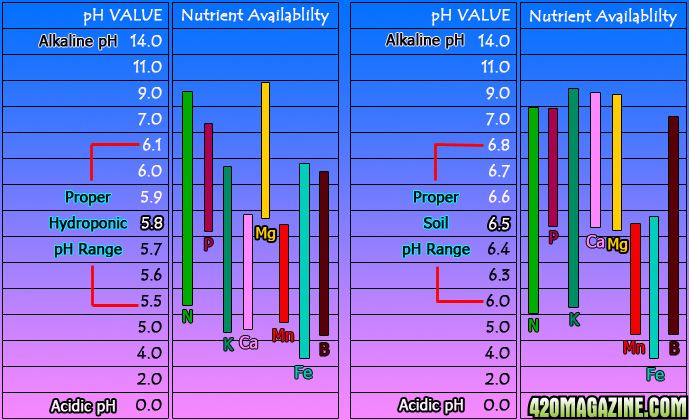Hell yeah @click80... once you get a handle on vpd, it's so much easier to understand how to create an excellent environment. Thanks for sharing the input
This is not too far off topic as Alfalfa tea, for me, is more convenient to apply as a foliar spray at certain times. You have to be careful though.
I just came across an article I found some time back when trying to figure out the best way to foliar feed. There is more to it than just assuming that stomata is the point of entry for foliar nutrition. the efficacy of foliar feeding is enhanced, sometimes by a large margin, by foliar feeding during high humidity (but not too high according to some sources) and foliar feeding when the plant is well hydrated.
Here is a link the entire article which contains a very nice diagram of the leave, cuticle layer and stomata. At the end of the article are cites and links to additional information if you like reading that type of stuff.
http://www.growersmineral.com/pdf/The GP - Foliar Nutrition.pdf
Some excerpts.
"In past times, many researchers believed that the cuticle presented such a barrier to the
penetration of nutrient solutions that uptake would not occur and that the only possible means of
penetration would be only through stomatal pores. It is now thoroughly established that this is not
the case. The stomatal opening may well be of relatively minor importance as an opening for
foliar nutrients due to the fact that the stomatal pores have a cuticle lining also. There has been, of
course, a search for pores in the cuticle of leaves by electron microscopy, but there is no indication
of a general occurrence of these pores except for a few species."
"Finally, other conditions such as leaf age, light concentration, nutritional status of plant,
and moisture conditions influence the plant's absorption of foliar applied nutrients. For example,
hydration of the cuticle causes swelling, the wax platelets which are interspersed throughout the
cuticle are spread further apart and penetration is facilitated. When the cuticle is dry either from
lack of moisture in the plant or from the absence of moisture on the leaf surface, the framework
constricts and impedes entry. It is well known that foliar absorption is most rapid in the presence
of leaf surface moisture, higher humidity conditions permit this condition."
And this is what clued me into how to get my root explosion from Foliar Application of Alfalfa Tea right before and after flip.
Some have suggested that the best way to foliar apply nutrients is to
"read the crop". However, Growers Chemical Corporation believes it is unwise to wait for the
appearance of a deficiency symptom before using foliar nutrition. The foliar spray should be used
with the objective of maintaining crops at an optimal productivity status.
Another defined benefit of foliar feeding comes from what is termed the "photon pump
priming effect" mechanism. By this we mean that after foliar nutrition is applied to the plant,
increased chlorophyll production and syntheses occur. From this extra chlorophyll, an increase in
cellular activity and respiration occurs that increases uptake by the plant vascular system in
response to the increased water needs of the plant. This increase in uptake automatically brings
more nutritional elements into the plant. The need for more moisture and greater gaseous
exchange stimulates additional root mass to provide it. Excess sugars produced by the plant from
the additional chlorophyll are excreted by the root hairs and stimulate microbial colonies on the
roots by providing additional energy sources. The bacterial and fungal colonies in turn provide
auxins, root stimulation compounds, and mineral nutrients to the plant. More root hairs and root
tissue further increase the plant's ability to uptake water and mineral elements. A chain reaction
can be set off by foliar nutrition to set up this loop. Great efficiencies are to be obtained with
foliar nutrition when we stimulate this pumping mechanism.
...and
Growers Chemical Corporation has for many years advised producers to use foliar nutrition
as close to plant reproduction stages as possible. Researchers now have shown that at flowering,
many plants, having achieved their largest leaf surface, show a marked depression in general
overall metabolic activity including nutrient uptake by the roots. Therefore, these researchers state
foliar applications of nutrients should be especially beneficial under such conditions.
Sorry if this is a bit off topic.


